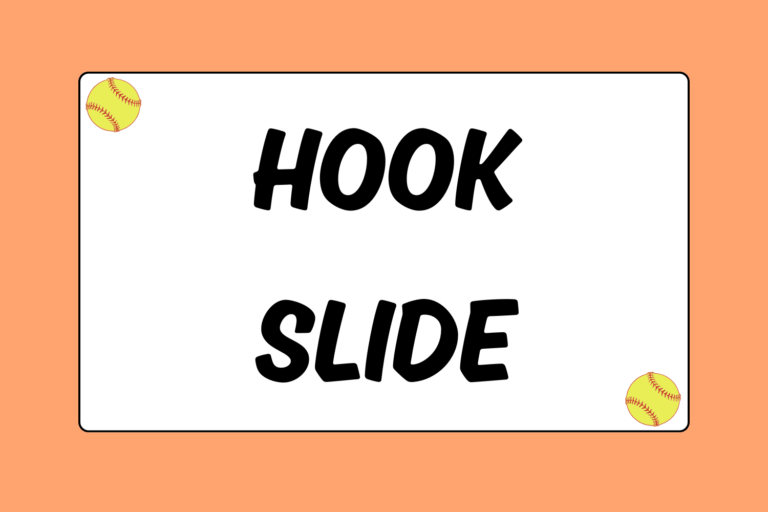This softball guide is aimed at pitchers who have decent control of their wrist snaps. A pitcher who hasn’t yet figured out how to snap the ball will likely have difficulty performing them (which can often lead to discouragement). If your pitcher needs to touch up her skills, check out our guide on wrist snaps and proper upper body posture.
The drills outlined below will focus on generating drive and momentum — the build-up to throwing fast pitches. They will also help your pitcher improve her accuracy by teaching her how to drive forward at the catcher, not off to the side.
To make these drills easy to understand, all examples will be for right-handed pitchers. For left-handed pitchers, simply reverse the instructions in regards the arm and legs.
Three-Step Walk-through
This drill focuses purely on generating forward momentum. A pitcher should come back to this drill if she is having trouble throwing strikes.
- The pitcher will start three strides behind the mound.
- She will walk up to the mound in three natural strides, starting with her right foot (right foot, left foot, right foot). On her second stride, her arm should be moving backwards to start the windmill. Her third stride should put her on the mound.
- On her third step, she will push off the mound with her right foot and lunge forward with her left foot. Her right foot will drag behind her as she finishes the windmill and releases the ball at her hip.
- Upon releasing the ball, she will take three more steps straight at the catcher: Right foot, left foot, right foot.
Hot Tip: Lunge Line
For pitching, power comes from the hips. Because of this, a pitcher won’t have anything behind her pitch if she merely steps off the mound — she needs to drive off it. Having a lunge line will help the pitcher visualize just how far she needs to come forward.
Have the pitcher walk out six steps from the front of the mound. Starting with her heel against the mound, she should count out six steps, heel to toe. At the instep of her sixth step, she should draw a line parallel to the mound. This is her lunge line. Upon lunging off the mound, she should strive to reach this line (or go beyond it) to gain maximum power.
Behind & Step
This drill is a modified walk-through drill, essentially cutting the literal three-step process down to one. Eventually, pitchers must learn to drive off the mound, using only the lunge as forward momentum. This drill focuses on getting to that point.
- The pitcher will start about one foot behind the mound, with her feet together and her arms apart.
- She will bring her hands together for a second or two. Then she’ll separate them, and throw both hands down and back behind her. As she does this, she will bend at the waist and with at knees.
- After her hands pass her legs, she will step forward with her right foot (her foot should land on the front of the mound). She will then push off the mound and drive forward into her lunge as she throws her arm around in the windmill.
- She will snap her wrist to release the ball as it passes her hip. After the snap, her right foot will finish its drag behind her.
- To finish the pitch, she should step her right foot in line with her left. This will ensure that she is properly closing her hip.
Hot Tip: Lunge Line
Both the lunge and drag should be performed very quickly. If they take too long, the pitcher probably won’t close her hip when she releases the ball, likely resulting in a high pitch. The easiest way to check for this is simply to listen to the pattern of the first two steps off the mound. You want to hear “Step, step,” two immediate steps with no long pause in between them. If you hear “Step… step” with a long pause in between, it means the pitcher is not closing her back hip fast enough.
Double Tap
This drill moves the pitcher onto the mound, and helps her focus on driving off the mound without needing to step forward.
- The pitcher will stand with her right foot on the front of the mound (the ball of her foot should be on the mound, and the toes should be off of it). Her left foot will be out in front of the mound.
- She will bring her hands together, and then throw them backward to start her windmill. As she is doing this, she will tap her left foot on the ground twice.
- As she is completing the second tap, she will throw her arm forward in the windmill and lunge off the mound with her left foot (pushing off with her right).
- Her right foot will drag behind her until her arm gets to her hip. She’ll snap her wrist, release the ball, and then step her right foot in line with her left to complete the pitch.
Rhythm is key here. The pitcher wants to be able to get into a pattern “tap, tap, pitch.” Finding this rhythm will help her get into the groove of pitching.
Hot Tip: Always Drive Forward
When you lunge off the mound, you always want to be driving off of it, not stepping off of it. As you swing your arms down to begin your windmill, make sure your knees are bent and your body is angled forward (bending from the waist). You essentially want to be driving all of your weight down through your legs. Then when it’s time to lunge, you drive that power forward, literally pushing off the mound.
45-degree Angle
This drill helps the pitcher get the feel of pushing off the mound, and then turning her body perpendicular to the catcher.
- The pitcher will stand on the mound, with her right foot placed regularly and her left foot’s heel against the front of the mound.
- She will then turn her body (feet and shoulders) 45 degrees away the plate, in the direction of her pitching arm. Right-handed pitcher turns to the right, and lefties turn toward their left.
- Then she will pitch the ball normally.
This stance teaches her how to close her back hip, which prevents the pitch from going too far inside (for a right-handed batter). By starting with it already open, she will have to close it to throw a strike.
Always Come Forward
These drills will really get your pitchers’ drive going. The first few drills give her a sense of momentum, making it easier for her to feel herself driving off the mound. As she progresses, she has to create more of that drive by herself. Eventually, on the mound, her lunge will create all of her drive, so she needs to know how this feels. With practice and dedication, she will understand this in no time!





